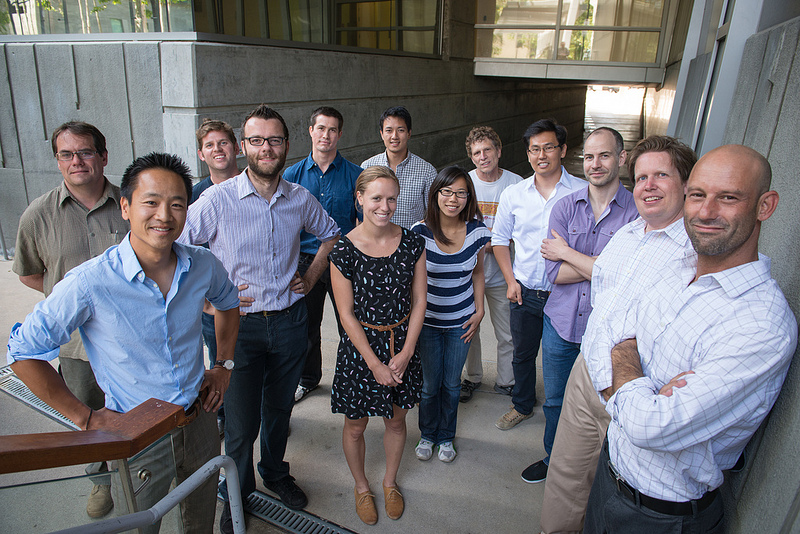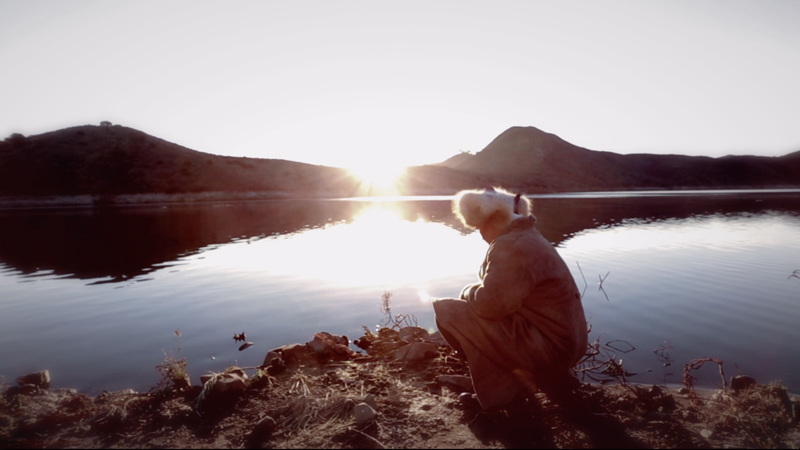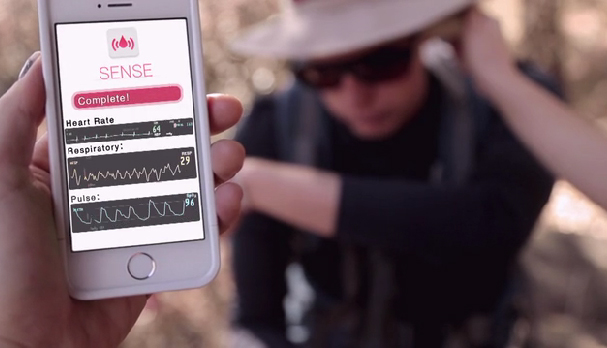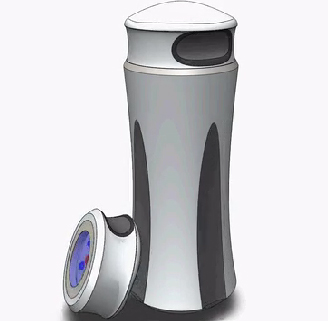With 'Cool Gizmo,' Research Team Hopes Citizen-Sensors Will Improve World Health
By by Paul Mueller, pkmueller@ucsd.edu
$50,000 Indiegogo Campaign to Support OASIS Target of 1,000 Active Citizen-Sensors by mid-2015
San Diego, Dec. 12, 2013 -- Enterprising researchers and students at the University of California, San Diego are looking for funding to complete a “citizen-sensor” project that, they hope, will revolutionize global health and environmental monitoring – especially in remote and undeveloped areas of the planet.
|
The Indiegogo campaign, they stress, is more a call for wide-spread citizen participation in health monitoring than a simple appeal for funds.
“What if you could hold the power of modern medical equipment in the palm of your hand?” they ask. The device the students call “a cool gizmo” can also monitor your environment’s health by sampling the air, soil, and water for pollutants, then analyze and report the findings.
For non-Star Trek fans, the gizmo is much like the “tricorder” of the popular sci-fi series -- a nifty hand-held device used for scanning, analyzing, and recording data. Less evocatively named, but nearly as high-tech, the UC San Diego device is called the Open Health Stack.
It would beneficially alter the landscape of the medical economy, researchers say, first by changing how people sense and perceive their own health, and then by collecting enough data to enable changes to environmental practices or policies.
Making those ambitious goals a reality is the role of their Distributed Health Labs, a collaboration between UC San Diego’s School of Medicine and the Qualcomm Institute, the UC San Diego division of the California Institute for Telecommunications and Information Technology (Calit2). DHLabs grew out of a $50,000 Calit2 Strategic Research Opportunities (CSRO) grant awarded in October 2012 after a competitive, peer-review selection process.
|
The researchers and students – from such diverse fields as nanoengineering, medicine, machine-learning, cryptography, crowd-sourced archaeology, citizen science, and human & computer ethnography – are building the Open Health Stack using cloud infrastructure, mobile apps, and sensors that will collect and analyze data from individuals and the environment.
The first “layer” of the stack is SENSE, the heart of the gizmo, a health-and-environment sensor that tracks vital signs and measures, for example, heavy metals in water or cholera in streams. The pocket-size device enables users to learn more about their surroundings.
The next layer is MyOasis, a mobile app that interacts with the sensors and lets users monitor and report what the sensors discover. MyOasis visualizes data collected by SENSE, allowing users to “see” things invisible to the eye, such as heart rates.
|
“Together,” Aronoff-Spencer says, “they provide an end-to-end solution for collecting and analyzing data at the individual, community, and global levels.”
With this technology, the team hopes citizen-sensors around the world will form a global network, the OASIS program, sensing and reporting information vital to their regions and their lives.
“We are exploring new ways in which the actions of individuals contribute to a ‘living body’ of shared, actionable knowledge,” says Lin. “Our goal is to get the devices into the hands of everybody who wants them, because turning to the crowd may be the best way to sense what’s actually happening on the ground.”
The UC San Diego team aims to raise $50,000 through Indiegogo to advance development of their device, SENSE, and to manufacture enough of the devices for distribution to the initial validation sites.
The campaign also aims to reach a target goal of 1,000 active citizen-sensors by mid-2015, and they have turned to Indiegogo to start enlisting 'the crowd.' If they reach their monetary goals, the team says they think that they will be able to achieve a cost-per-device of under $50, a critical threshold. Details about the crowd-funding process and the vendor are available here.
The Open Health Stack might also, they hope, win the $10-million Qualcomm Tricorder XPRIZE, a global competition to stimulate innovation and integration of precision diagnostic technologies, making valid health monitoring available directly to "health consumers" in their homes.
Once the easy-to-use technology is manufactured, the UC San Diego team will deploy the devices in Mongolia, Mozambique, and Haiti, its inaugural research sites.
|
Similarly, Mozambique and Haiti are emerging nations with large burdens of infectious diseases which can be better controlled with increased monitoring.
UC San Diego researchers will distribute the rugged, inexpensive, easy-to-operate sensors among affected Mongolians, as well as to health workers in Mozambique and Haiti, to enable them to monitor their health and their environment, and to create “maps” of that blended data to study the sensor’s validity and reliability.
The students and their faculty mentors are enthusiastic not only about the scientific and technical aspects of the project, but also about the humanitarian and ecological benefits.
“We are unified in our goal,” they say, “to produce an affordable, transformative, and open product to improve health care around the world.”
Media Contacts
Paul K. Mueller, 858-534-8564, pkmueller@ucsd.edu or Doug Ramsey, 858-822-5825, dramsey@ucsd.edu
Related Links
Indiegogo OASIS Campaign
Crowdfunding at UC San Diego
Qualcomm Tricorder XPRIZE
Calit2's Qualcomm Institute
Distributed Health Labs





